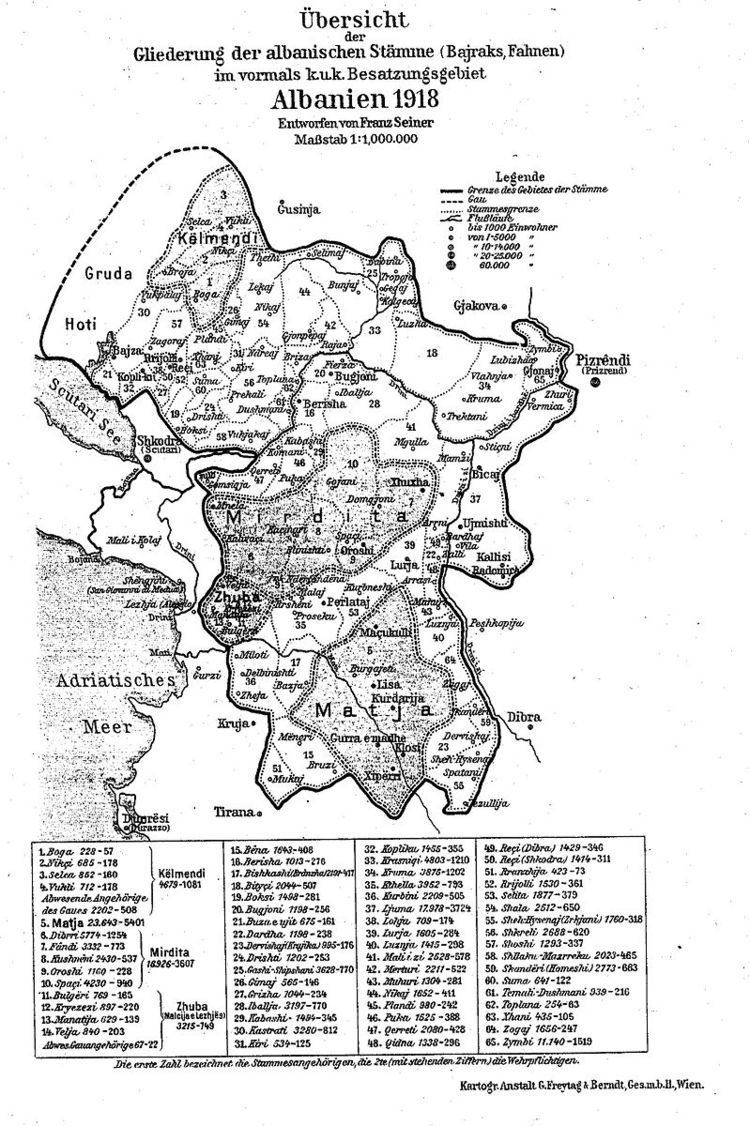 | ||
Kulla e ali shllakut kenge per gjovalin zefin
Shllak (definite Albanian form: Shllaku), is a tribe and region of Northern Albania, east of Shkodër. Members of Shllaku tribe are Catholics. The habitat corresponds to today's Shllak Municipality near Shkodër.
Contents
Geography
The historical region of Shllaku corresponds to Shllak. The tribal region borders the Shkreli, Dushmani and Toplana tribal regions to the north.
Anthropology
According to tradition, the Toplana, Shllaku as well as the Gashi can trace their lineage back to 1450 when they arrived from Vasojevići, a Serb tribe in Montenegro, to Albania. A study published in 1911 described the Shllaku as of a darker complexion than other northern Albanian tribes. According to tradition, recorded by Nopcsa, the tribal ancestor was named "Can Gabeti", one of four brothers (the others were the founder of the Gashi, Toplana and Megulla). Gabeti, said to have been an Orthodox Christian from Montenegro, came across the original native population who were the ancestors of the Kolë Pep Fura family and whose last male descendant died about 1900. The original population of Shllaku was called Lorehic and is said to be related to the family of the same name in Guri i Zi on the plain of Shkodër.
Shlaku tribe consists of about three hundred houses, all Christian. It is an offshoot of the tribe of Toplana. A third of it lives by charcoal-burning, the others by keeping goats. There is very little cultivable land.
History
The earliest available record of the name of the tribe is 'Scelacu' from 1641. According to Elsie, the tribe believes it is a branch of the Toplana tribe.
In 1877 Ottoman soldiers from Shllaku attacked Montenegro.
In 1922 this tribe had a population of 1,500.
